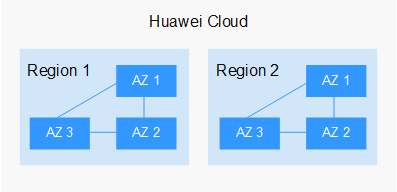Basic Concepts
Instances
The smallest management unit of GaussDB is the instance. A DB instance is an isolated database environment on the cloud. You can create and manage GaussDB instances on the management console. For details about the storage types, versions, and instance statuses, see DB Instance Description.
DB Engine Versions
GaussDB V2.0-8.201, V2.0-8.210, and V2.0-8.218 are supported.
For details about the DB engine versions, their corresponding kernel engine versions, and how to check these versions, see DB Engine Versions.
Instance Types
- Distributed instances allow you to add nodes as needed to handle large volumes of concurrent requests.
- Centralized instances are suitable for scenarios with small and stable volumes of data, where data reliability and service availability are extremely important.
For more information, see DB Instance Types.
Instance Specifications
Instance specifications define the number of vCPUs and amount of memory (in GB) of an instance. For details, see Instance Specifications.
Coordinator Nodes
A coordinator node (CN) receives access requests from applications, distributes tasks to DNs for parallel processing, and returns execution results to clients.
Data Nodes
A data node (DN) stores data, executes data query tasks, and returns execution results to CNs.
Shards
A shard contains multiple DNs. The number of DNs in a shard depends on the value of Replicas, for example, if Replicas is set to 3, there are three DNs (one primary and two standby DNs) in a shard.
Automated Backups
When you buy a GaussDB instance, an automated backup policy is enabled by default with the retention period set to seven days. You can modify it as required. GaussDB automatically creates full backups for the instance based on your configuration.
Manual Backups
Manual backups are user-initiated full backups of instances. They are retained until you delete them manually.
Regions and AZs
A region and availability zone (AZ) identify the location of a data center. You can create resources in a specific region and AZ.
- Regions are defined by a combination of geographical location and network latency. Public services, such as Elastic Cloud Server (ECS), Elastic Volume Service (EVS), Object Storage Service (OBS), Virtual Private Cloud (VPC), Elastic IP (EIP), and Image Management Service (IMS), are shared within the same region. Regions can be universal or dedicated. A universal region provides all sorts of cloud services for all users. A dedicated region provides only services of a given type or only for specific users.
- An AZ contains one or more physical data centers. Each AZ has independent cooling, fire extinguishing, moisture-proofing, and electricity facilities. Within an AZ, compute, network, storage, and other resources are logically divided into multiple instances. AZs within a region are interconnected using high-speed optical fibers to allow you to build highly available systems across AZs.
Figure 1 shows the relationship between regions and AZs.
Huawei Cloud provides services in many regions around the world. You can select a region and an AZ as needed. For more information, see Global Products and Services.
Projects
Projects are used to group and isolate OpenStack resources (compute, storage, and network resources). A project can be a department or a project team. Multiple projects can be created for one account.
Feedback
Was this page helpful?
Provide feedbackThank you very much for your feedback. We will continue working to improve the documentation.See the reply and handling status in My Cloud VOC.
For any further questions, feel free to contact us through the chatbot.
Chatbot






